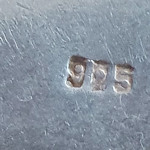
Photos prove an excellent tool for promoting awareness of environmental problems. But what role does image production itself play in creating those very same problems? The Mining Photography exhibition at the Kunst Haus Wien has some answers.
- Explores resource use in photography
- …from daguerreotypes to smartphones
- Highlights related ecological and sociopolitical issues
- Includes numerous photos and contemporary art
- All text in English, too
- Runs Mar 9 – May 29, 2023
- See also:
Photos and footprints

(Bars of silver in a camera manufacturer’s vault from 1945; press photo courtesy of and © Rare Books, Special Collections and Preservation, University of Rochester)
Mention photos and the environment, and thoughts quickly turn to images of deforestation, weather extremes, desertification, and similar.
As a “Green Museum”, the Kunst Haus Wien often uses its photo exhibitions to document environmental and sociopolitical change. Such events can raise awareness, invite inquiry, and drive behaviour.
But how has photography itself contributed to such issues as the climate crisis?
Mining Photography turns the tables on the medium in a moment of admirable self-reflection.
In a novel change of perspective, the exhibition (which comes to Vienna through a cooperation with the Museum für Kunst und Gewerbe Hamburg) explores resource use in the context of the production, distribution, and storage of photographic images through the decades.
The core focus is on key raw materials required by the photographic industry at one time or another…whether in the daguerreotype plates of the 1800s or today’s smartphones and storage devices: copper, silver, paper, rare earth elements, and similar.
Photographs (!), contemporary art, display text and expert interviews illuminate socioeconomic and environmental issues around the extraction, processing, and disposal of resources.
Energy consumption and waste also get attention.
Consider Mining Photography a melting pot of information that seeks to educate without judging.

(Press photo © F&D Cartier, Bildrecht Wien 2023)
A tour of the displays makes clear, for example, the intimate relationship between photography, resource use and industrial development (with all its consequences).
Photography is not just a passive beneficiary of resource availability and industrial advance but itself also a driver of consumption and “progress”.
At one point, for example, photographic needs accounted for over half the world’s demand for silver. Even today, camera quality and image processing play a key role in smartphone development and use, while image storage and distribution consume vast quantities of energy.
Photography’s own technical development relied (and continues to rely) on extensive resource use and the medium cannot disassociate itself from the negative impacts of that use both today and in the past. Impacts such as exploitation of labour, climate change, and landscape destruction.
An understanding of the ecological footprint left by image production, however, does more than open eyes to some of the less desirable consequences of clicking a camera button.
The information indirectly leads you to ask yourself uncomfortable questions, especially as you watch your smartphone battery levels deplete after taking another (possibly unnecessary) selfie.
Finally, the various contemporary art positions associated with particular themes make intriguing viewing in their own right thanks to their creativity, often innovative production process, and value as documentation and information source.
Like the wider exhibition itself, these photos, films and installations successfully combine art, science, socioeconomics and history in one.
Dates, tickets & tips
Explore photography’s environmental impacts through time from March 9th to May 29th, 2023.
The exhibition at the Kunst Haus Wien requires its own ticket, but I’d heartily recommend the combination ticket with the Hundertwasser Museum in the same building (since the price difference is minimal).
Otherwise simply pay €9 on the door (at the time of writing) to view Mining Photography and skip the museum.
Many museums now feature sustainability and the climate crisis at the heart of selected exhibitions, but two stalwarts with a more formal approach to the topics elsewhere in Vienna are the Natural History Museum and the Museum of Science and Technology.
And for more photography-oriented exhibitions, check the listings for current and future events at the main art venues.
How to get there
Follow the tips at the bottom of the Kunst Haus Wien page.
Address: Untere Weißgerberstraße 13, 1030 Vienna